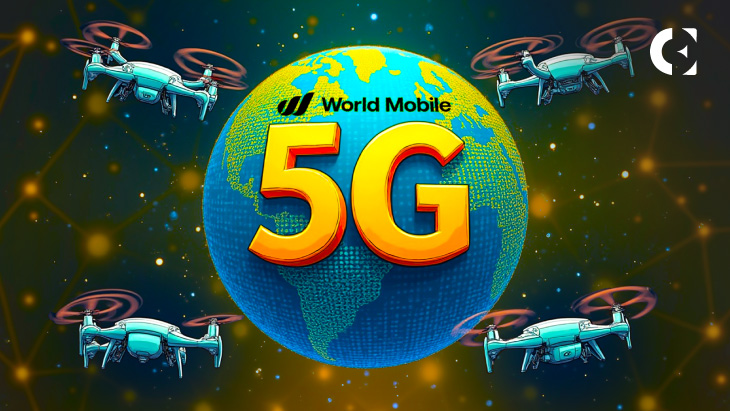- World Mobile is launching hydrogen-powered drones to deliver blockchain-enabled 5G connectivity from the stratosphere.
- The aerial network offers ultra-low latency and claims to be up to 18 times cheaper per gigabyte than satellite-based services.
- The initiative targets underserved regions while facing stiff competition from platforms like Helium Mobile and Starlink.
World Mobile is entering the stratosphere, literally and figuratively, in its mission to decentralize and democratize global internet access.
Blockchain in the Sky
World Mobile has unveiled “World Mobile Stratospheric,” an initiative deploying hydrogen-powered drones to beam 5G connectivity from the stratosphere. Developed in partnership with Indonesian telecom giant Protelindo, the project aims to cover the connectivity gaps that traditional infrastructure can’t reach.
These high-altitude drones operate at 60,000 feet, flying above weather systems and using 450 steerable beams to cover up to 15,000 square kilometers per aircraft, according to Charles Barnett, Chief Business Officer of World Mobile Group.
Thanks to its aerial architecture and blockchain-backed decentralized physical infrastructure network (DePIN) on the ground, World Mobile claims its solution delivers ultra-low latency (6ms) and is up to 18 times more cost-effective per gigabyte than traditional satellite-based networks.
Tackling a $98.3 Billion Market with Blockchain and Aerial Tech
The sky-based communication sector, valued at $98.3 billion, is increasingly attracting attention from innovators. While satellite giants like Starlink dominate space-based infrastructure, World Mobile is carving out its niche with aerial, drone-powered networks optimized for regions with high mobile user density.
Unlike satellite services that require proprietary hardware, World Mobile’s network integrates with standard mobile devices, reducing barriers to entry for underserved populations.
The Major Hurdles: Tech and Regulators
Despite the innovation, the project has its hurdles. Barnett acknowledged that designing and operating drones in the stratosphere comes with significant technical and regulatory challenges.
Each drone, measuring 56 meters in wingspan and weighing four tons, must stay airborne for nine days before refueling. Achieving this requires balancing fuel efficiency with structural integrity to endure variable conditions and cosmic radiation at high altitudes.
Temperature regulation is also critical, as the sun-facing side of the drone can overheat without appropriate heat displacement systems.
On the regulatory front, World Mobile must comply with strict aviation standards set by authorities like the FAA in the U.S. and EASA in Europe. Permits for unmanned aerial vehicles (UAVs) and airworthiness certification remain major hurdles for commercial deployment.
The Competition: Helium and Starlink
Meanwhile, World Mobile is not alone in the race to reshape global connectivity. Helium Mobile, a decentralized wireless provider, uses a network of nodes and strategic telecom partnerships (including with AT&T) to fill service gaps in dead zones.
Likewise, Elon Musk’s Starlink continues to expand its satellite internet service, especially in remote areas lacking cellular coverage. However, Barnett notes that World Mobile’s aerial platform better serves densely populated regions by leveraging existing mobile usage patterns rather than relying on dedicated hardware.
Disclaimer: The information presented in this article is for informational and educational purposes only. The article does not constitute financial advice or advice of any kind. Coin Edition is not responsible for any losses incurred as a result of the utilization of content, products, or services mentioned. Readers are advised to exercise caution before taking any action related to the company.







